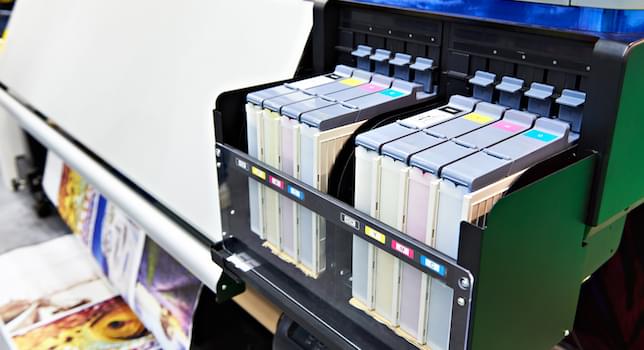
- In 2022 graphical and label/ packaging inkjet printing generates revenues of $86.8 billion globally, printing and finishing more than 1.4 trillion A4 prints
- The inkjet market grew in value by an average CAGR of 7.2% in value and 11.9% in print volume between 2017 and 2022
- The inkjet market will see volume growth averaging 10.0%, while value will grow by an average 8.2% to reach $128.9 billion in 2027.
This new report explores the areas of growth in this expanding market. The inkjet printing that is covered in this report is produced on industrial grade machinery, it does not include home/office/workgroup printing, and rather it is the print-for-profit sector.
Our exclusive content
- Demand for print is changing in an ever more connected world as consumers are able to select their preferred media channels
- Inkjet can offer economic advantages over analogue alternatives for short runs that are an increasing share of the print and printed packaging market
- As higher performance presses come on stream, the economic crossover against analogue is increasing and as the quality improves inkjet is being used in more print applications.
- As print quality and reliability improves inkjet is being used for more applications
- Inkjet offers economic advantages over analogue print for short runs, which are seeing increase in demand; as higher performance presses are used this economic crossover against analogue increases
- In the industrial sectors there may be specialist functional fluids used to print bio-medical or electronic products.
This report is based on extensive primary and secondary research. Primary research consisted of targeted interviews with material suppliers, converters and experts drawn from key markets. This was supported by secondary research in the form of extensive literature analysis of published data, official government statistics, domestic and international trade organisation data, company websites, industry reports, trade press articles, presentations, and attendance at trade events.
Who should buy this report?
- Raw material producers
- Inks and consumable companies
- Equipment for inkjet printing suppliers
- Print and packaging converters and users
- Consultants and analysts
Sean Smyth has spent more than 25 years in senior technology and management positions for print businesses across the supply chain. Sean has extensive experience in digital printing. In his time with Smithers, Sean has authored several off-the-shelf market studies, including Smithers’s flagship title The Future of Global Printing, and has provided strategic consultancy services to a range of clients across the value chain.
